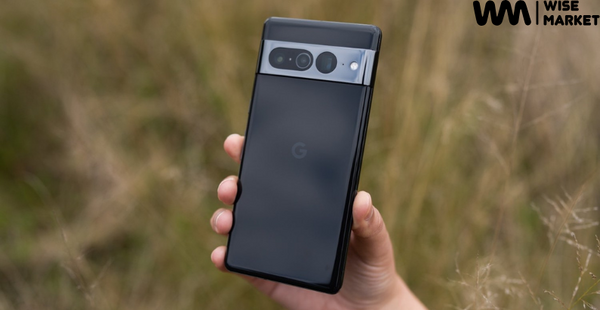Notifications
ALL BUSINESS
COMIDA
DIRECTORIES
ENTERTAINMENT
FINER THINGS
HEALTH
MARKETPLACE
MEMBER's ONLY
MONEY MATTER$
MOTIVATIONAL
NEWS & WEATHER
TECHNOLOGIA
TV NETWORKS
VIDEOS
VOTE USA 2026/2028
INVESTOR RELATIONS
DEV FOR 2025 / 2026
ALL BUSINESS
COMIDA
DIRECTORIES
ENTERTAINMENT
FINER THINGS
HEALTH
MARKETPLACE
MEMBER's ONLY
MONEY MATTER$
MOTIVATIONAL
NEWS & WEATHER
TECHNOLOGIA
TV NETWORKS
VIDEOS
VOTE USA 2026/2028
INVESTOR RELATIONS
DEV FOR 2025 / 2026
 wise market -
Apr 11 -
Technology -
60 views -
0 Comments -
0 Likes -
0 Reviews
wise market -
Apr 11 -
Technology -
60 views -
0 Comments -
0 Likes -
0 Reviews

Google's Pixel series has long been synonymous with cutting-edge technology and user-centric design. The Pixel 7 Pro, introduced in late 2022, exemplifies this commitment, offering Australians a blend of innovative features and robust performance. In this comprehensive review, we delve into the Google Pixel 7 Pro specifications, features, camera capabilities, battery life, and how it stacks up against competitors like the iPhone 14 Pro Max and Samsung Galaxy S23.
The Pixel 7 Pro boasts a 6.7-inch LTPS AMOLED display with a resolution of 1440 x 3120 pixels, ensuring crisp and vibrant visuals. Under the hood, it is powered by Google's Tensor G2 processor, complemented by 12GB of RAM, providing a smooth and responsive user experience. Storage options include 128GB, 256GB, and 512GB variants, catering to diverse user needs. The device is equipped with a 5,000mAh battery, supporting 30W fast charging, aiming to keep users connected throughout the day.
In terms of design, the Pixel 7 Pro presents a refined aesthetic with a polished aluminum frame and Gorilla Glass front and rear panels. The camera bar, a signature feature, is seamlessly integrated into the body, offering a sleek profile. While the design is reminiscent of its predecessor, the Pixel 6 Pro, the Pixel 7 Pro introduces subtle enhancements that contribute to its premium feel.
The 6.7-inch display delivers vibrant colors and sharp details, enhancing media consumption and gaming experiences. The LTPO technology allows for an adaptive refresh rate, optimizing battery life without compromising visual fluidity. However, some users have noted that the display's brightness levels may not match those of competitors like the iPhone 14 Pro Max.
Equipped with the Tensor G2 processor and 12GB of RAM, the Pixel 7 Pro handles multitasking and demanding applications with ease. Benchmark tests place its performance slightly ahead of the Pixel 6 Pro, though some competitors may offer superior processing power. Nonetheless, daily usage remains smooth, and the clean Android interface enhances the overall experience.
Google's commitment to photography excellence is evident in the Pixel 7 Pro's camera system. The rear setup includes a 50MP wide lens, a 12MP ultrawide lens, and a 48MP telephoto lens with 5x optical zoom. The Tensor G2 processor enhances image processing, delivering sharp and vibrant photos. Low-light performance is impressive, and the digital zoom capabilities extend up to 30x, providing versatility for various shooting scenarios. However, some users have observed that video quality may lag behind competitors like the iPhone 14 Pro Max.
The Pixel 7 Pro's 5,000mAh battery offers a full day of usage for moderate users. However, heavy users may find themselves needing to recharge before day's end. The device supports 30W fast charging, capable of reaching a full charge in approximately 90 minutes. Wireless charging is also supported, providing flexibility in how users power their devices.
Google promises three years of operating system updates and five years of security patches for the Pixel 7 Pro, ensuring users have access to the latest features and security enhancements. This commitment is commendable, though some competitors may offer longer support durations.
In the battle of flagship smartphones, the Pixel 7 Pro and iPhone 14 Pro Max present compelling offerings. The Pixel 7 Pro is priced more competitively, starting at $1,299 AUD for the 128GB model, compared to the iPhone 14 Pro Max's starting price of $1,899 AUD. Both devices offer high-end displays with adaptive refresh rates, though the Pixel's 6.7-inch LTPO AMOLED display offers a higher resolution.
Performance-wise, both devices are equipped with powerful processors, with the Pixel's Tensor G2 and the iPhone's A16 Bionic delivering smooth experiences. Camera capabilities are robust on both ends, with the Pixel offering a 50MP main sensor and the iPhone featuring a 48MP wide lens. Battery life on the Pixel 7 Pro is commendable, though the iPhone 14 Pro Max may offer slightly longer endurance. Software support is strong on both devices, with Google offering three years of OS updates and Apple providing extended support for its devices.
The Samsung Galaxy S23 series offers stiff competition to the Pixel 7 Pro. Both devices feature high-refresh-rate displays, with the Galaxy S23 offering a 120Hz Dynamic AMOLED display. Performance is top-notch on both devices, with the Pixel's Tensor G2 and Samsung's Exynos or Snapdragon processors delivering excellent speeds.
Camera-wise, the Pixel's 50MP main sensor competes with Samsung's advanced camera system, offering features like Space Zoom. Battery life is similar, with both devices supporting fast charging, though the Pixel's 30W charging may be slightly faster. Software support is robust on both devices, with Google and Samsung providing regular updates.
The Google Pixel 7 Pro is more than just another flagship—it’s a bold statement by Google that innovation and practicality can go hand in hand. For Australian consumers, the Pixel 7 Pro presents a highly attractive package: a sleek design, a brilliant high-resolution display, top-tier camera capabilities, and the purest Android software experience on the market. Its smart features like Photo Unblur, Real Tone, and the revamped Google Assistant further elevate its usability beyond specs alone.
When compared to its main competitors—the iPhone 14 Pro Max, Samsung Galaxy S23, and even the foldable Samsung Galaxy Z Flip 5—the Pixel 7 Pro holds its ground. It might not outshine them in every department (Apple still dominates in video recording and Samsung brings raw hardware horsepower), but the Pixel excels in consistency, intelligent photo processing, software longevity, and value for money.
